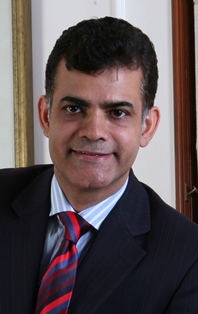 Yesterday’s session on the BRICS countries made me realize how quickly times change. Just a few years ago, BRICS was considered the lodestone for investment success – today, the sheen appears to have faded. The massive amount of foreign capital that was pumped into Brazil, Russia, India, China and South Africa would have had to pay off very handsomely for the initial hype to be vindicated. The claims that BRICS will dominate the world’s economy by 2030 seem very rash in hindsight.
Yesterday’s session on the BRICS countries made me realize how quickly times change. Just a few years ago, BRICS was considered the lodestone for investment success – today, the sheen appears to have faded. The massive amount of foreign capital that was pumped into Brazil, Russia, India, China and South Africa would have had to pay off very handsomely for the initial hype to be vindicated. The claims that BRICS will dominate the world’s economy by 2030 seem very rash in hindsight.
Mid-life crisis? Possibly. Maybe the best way to combat that sinking feeling is to buy a sports car or climb a mountain. High speed acceleration and a reason to experience that fading sense of achievement usually help to get the adrenaline flowing again.
Mid-life is the prime of life, because that is when potential can actually be at its peak. Of course, that does not always happen – much depends on whether maturity has put paid to the sometimes foolish dreams of youth, and if accumulated experience from past mistakes has provided a clearer path for the future. I would say that this process is actually happening in India and China.
Maybe a country like Japan could take a leaf or two out these two countries’ books. Without a doubt, Japan is on a steep growth trajectory, thanks to its dynamic economic policies. However, I am convinced that if Japan emulated Indian and China and put more women in the workforce, its growth percentage could be at least 16% higher.
Coming back to BRICS, I have my doubts about some of the conclusions that economists are now making. I’m talking of the notion that only China has really delivered on the promises in any measure and that none of the other BRICS countries are attractive anymore. Let’s not forget India…
India has the highest growth rate of its urban population among all BRIC nations. Rapid urbanisation and employment growth offer huge opportunities for real estate development and investment, particularly in the residential sector. By 2030, India will have 68 cities with populations of more than 1 million people, 13 cities with populations of more than 4 million people and 6 megacities with populations of 10 million people or more.
The median age in India is 26.2 years (the world average of 28.4 years, and China’s median age is 35.5 years. Nearly 64% of the Indian population is in the working age group of 15-64 years and 35% is relatively young in the age group of 15-34 years.
India’s relatively young population is going to provide a pretty deep pool of consumers for homes – a pool that investors will definitely want to take a plunge in. At least in youth-driven India, it is certainly a little premature to talk about a mid-life crisis.
As for the rest of the world – it is hard to ignore the fact its population is growing massively, that wealth-creation is increasing by leaps and bounds and that new cities are being formed every year. This excellent video by Jones Lang LaSalle explains how by the end of this decade, there will be more private wealth in Asia-Pacific than anywhere else in the world, including North America.
It is definitely worth watching for anyone who feels that the world in general and BRICS in particular is beginning to make its retirement plans.
